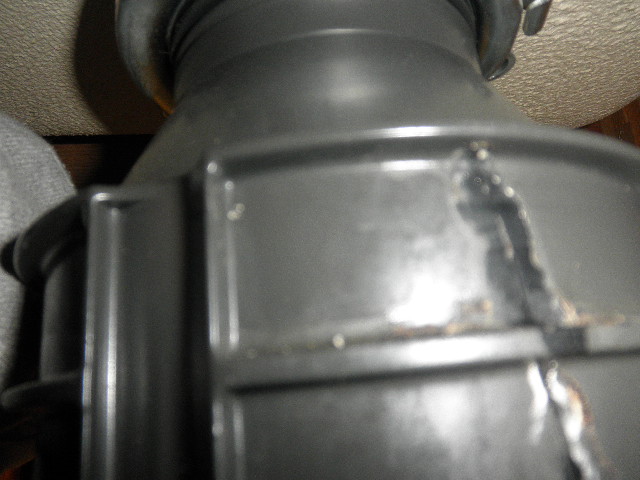Just how do you actually feel in relation to Garbage Disposal Leaking From Bottom?

Garbage disposals are vital kitchen devices that assist in throwing away food waste effectively. However, a dripping garbage disposal can be an irritating and untidy trouble to handle. Fortunately, lots of leaks can be taken care of conveniently with a few straightforward steps. In this post, we will certainly discuss exactly how to deal with a leaking garbage disposal properly.
Intro
Garbage disposals are set up under cooking area sinks and are made to shred food waste right into smaller items, enabling it to pass through the pipes system quickly. While these devices are usually trustworthy, leaks can take place in time due to deterioration, loose links, or damages to the system.
Step-by-Step Overview to Repairing a Leaking Waste Disposal Unit
Shut off the Power
Prior to attempting any repair work, ensure that the power to the waste disposal unit unit is switched off to prevent the danger of electric shock.
Locate the Leakage
Recognize the exact area of the leak and identify the reason
Tighten Links
Use a wrench to tighten any type of loose connections in between the disposal device and the pipes system.
Replace Seals or Gaskets
If the leak is due to worn seals or gaskets, get rid of the old elements and replace them with new ones.
Patching Splits or Holes
For cracks or openings in the disposal system, use epoxy or an ideal patching material to secure the broken area.
Recognizing the Source of the Leakage
Before trying to take care of a leaking waste disposal unit, it is necessary to recognize the source of the leakage. This can usually be done through visual examination or by conducting basic examinations.
Visual Evaluation
Check the garbage disposal unit very carefully for any kind of signs of water leak. Pay close attention to locations around seals, gaskets, and connection factors.
Testing for Leaks
One means to evaluate for leakages is by running water through the disposal system and looking for any visible indicators of leakage.
Typical Sources Of Leaks in Garbage Disposals
Worn Seals and Gaskets
Seals and gaskets play a crucial duty in preventing water from dripping out of the garbage disposal. Over time, these elements can deteriorate, causing leakages around the disposal unit.
Loose Connections
The links between the waste disposal unit and the pipes system can come to be loose gradually, triggering water to leak out throughout procedure.
Fractures or Openings in the Disposal Unit
Physical damages to the garbage disposal, such as fractures or holes in the real estate, can likewise cause leaks.
Devices and Products Needed for Repairing a Dripping Garbage Disposal
Before beginning the fixing process, gather the needed devices and products, including a screwdriver, adjustable wrench, plumbing technician's putty, substitute seals or gaskets, and epoxy or patching product for fixing splits or holes.
Evaluating the Garbage Disposal After Repair Work
When the repair work is total, evaluate the garbage disposal by running water via it to make sure that the leak has actually been fixed.
Preventive Maintenance Tips to Prevent Future Leaks
To avoid future leakages, it is important to carry out normal maintenance on your waste disposal unit. This consists of keeping it clean, preventing placing non-food things or tough objects down the disposal, and periodically checking for leaks or other problems.
Verdict
Finally, dealing with a dripping waste disposal unit is a relatively straightforward process that can be completed with basic tools and materials. By complying with the steps laid out in this post and practicing preventative maintenance, you can maintain your garbage disposal in good working condition and avoid pricey fixings in the future.
What to Do About a Leaking Garbage Disposal
A leaking garbage disposal often goes unnoticed until you confront a sopping cabinet, a foul-smelling puddle, or an audible drip-drip-drip from the unit. The fix can be frustrating, too, because the leak can stem from a number of components in the system. Fortunately, with a little sleuthing, you can zero in on the leak and—depending on the exact location—stop the icky oozing and repair the component that caused it. Worst case scenario, if it turns out that the garbage disposal must be replaced, installing a new one is a reasonable do-it-yourself task for those with basic plumbing skills. Read on to keep the cash you’d otherwise hand over to a pro.
Prepare to find the leak
Prior to testing the garbage disposal for leaks, unplug it at the wall outlet and turn off the power from the breaker box to prevent electrical shock. Then insert a watertight sink stopper into your sink drain and wipe the unit dry with a clean cloth. In any handy container, mix a few drops of food coloring into a few cups of water, and pour the dyed water onto the sink stopper to help you locate the leak.
Investigate the source
- the top, where the disposal meets the sink drain
- the side, where the dishwasher hose or main drain pipe connects to the disposal
- or the bottom of the unit
Inspect each of these locations while gliding a light-colored rag over the unit; the dyed water will readily show on the rag and reveal the location of the leak. If a leak isn’t immediately apparent, remove the sink stopper and pour a few more cups of dyed water down the sink drain, then check for leaks again. Leaks near the top of the unit are more likely to show themselves while the sink is plugged, while side and bottom leaks are more noticeable while the sink is unplugged.
The metal sink flange that sits directly inside the sink drain is typically sealed around the top with plumber’s putty (a clay-like sealant) and then secured from under the sink with bolts. If the plumber’s putty deteriorates, or the bolts loosen, the flange can no longer form a watertight seal between the sink drain and the disposal—which could cause a leak at the top of the unit.
To reseal the leaky flange, you must first detach the garbage disposal. Start by loosening the screws securing the main drain pipe to the disposal, then loosen the screws in the metal clamp securing the dishwasher hose to the disposal and detach the drain pipe and dishwasher hose from the disposal. Loosen the screws in the mounting ring that connects the disposal to the metal mounting assembly beneath the sink, then pull down the disposal and carefully set it on a clean, dry surface. Loosen the bolts in the mounting assembly with a wrench, then pull down the mounting assembly and set it near the disposal.

As a serious person who reads about The Handy Guide To Fixing Your Garbage Disposal Leaking, I assumed sharing that excerpt was beneficial. Don't hesitate to take the time to promote this content if you appreciated it. I recognize the value of reading our article about Why Is My Garbage Disposal Leaking From the Bottom?.
Request Service
Comments on “Best Methods for Resolving a Leak in Your Garbage Disposal”